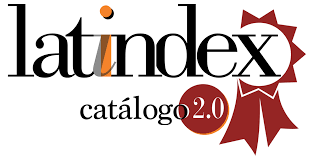Digital communication by the National Tourist Offices in the face of the Covid-19 pandemic crisis: a comparison between Asian and European countries on Twitter
DOI:
https://doi.org/10.5783/revrrpp.v12i24.789Keywords:
National Tourism Organisations, COVID-19, digital communication, tourism destination image,, Europe, AsiaAbstract
The crisis caused by the Covid-19 pandemic and government measures taken as a result have had a direct effect on the tourism industry. This research aims to find out how the National Tourist Offices (NTOs) of various countries in Asia (South Korea and India) and in Europe (Germany and Spain) managed their crisis communication in the face of Covid-19. The study was conducted by analysing the content of messages posted on NTOs’ Twitter accounts from the onset or detection of the first patient until one month after the World Health Organization's official declaration of a pandemic. The results do not allow establishing communication management models according to geographic areas or the decisions taken by governments. However, the data do reveal that the Asian NTOs analysed reacted more quickly and were more active in their communication at the onset of the crisis compared to those in Europe. They also show that tweets alluding to Covid-19 generated most reactions among users, despite not being the ones most published by the NTOs. This study contributes to countries’ management of tourism-related communication in the face of pandemic crises as it provides knowledge on the use of Twitter in communications by various NTOs, which may serve as a reference for the proper digital communication of crises in such situations so that countries’ image as destinations is not damaged.
Downloads
References
AGUILAR-GALLEGOS, N et al. (2020). Dataset on dynamics of Coronavirus on Twitter. Data in Brief, 30, 105684. https://doi.org/10.1016/j.dib.2020.105684
BRUMMETTE, J., & SISCO, H.F. (2015). Using Twitter as a means of coping with emotions and uncontrollable crises. Public Relations Review, 41(1), 89–96. http://dx.doi.org/10.1016%2Fj.pubrev.2014.10.009
CARLSEN, J.C., & HUGHES, M. (2008). Tourism market recovery in the Maldives after the 2004 Indian Ocean tsunami. Journal of Travel & Tourism Marketing, 23(2–3), 139–149. http://dx.doi.org/10.1300/J073v23n02_11
CHENG, Y. (2019). The social-mediated crisis communication research: Revisiting dialogue between organizations and publics in crises of China. Public Relations Review, 46(1). http://dx.doi.org/10.1016/j.pubrev.2019.04.003
CHEW, E.Y.T., & JAHARI, S.A. (2014). Destination image as a mediator between perceived risks and revisit intention: A case of post-disaster Japan. Tourism Management, 40, 382–393. https://doi.org/10.1016/j.tourman.2013.07.008
COLLEY, K.L., & COLLIER, A. (2009). An overlooked social media tool? Making a case for wikis. Public Relations Strategist, 19(2), 110–122.
COOMBS, W.T. (1998). An analytic framework for crisis situations: Better responses from a better understanding of the situation. Journal of Public Relations Research, 10(3), 177–191. https://doi.org/10.1207/s1532754xjprr1003_02
COOMBS, W.T. (2007). Protecting organization reputations during a crisis: The development and application of situational crisis communication theory. Corporate Reputation Review, 10(3), 163–176. https://doi.org/10.1057/palgrave.crr.1550049
COOMBS, W.T. (2015). The value of communication during a crisis: Insights from strategic communication research. Business Horizons, 58(2), 141–148. https://doi.org/10.1016/j.bushor.2014.10.003
CRÓ, S., & MARTINS, A.M. (2017). Structural breaks in international tourism demand: Are they caused by crises or disasters?. Tourism Management, 63, 3–9. https://doi.org/10.1016%2Fj.tourman.2017.05.009
DE SAUSMAREZ, N. (2007). Crisis management, tourism and sustainability: The role of indicators. Journal of Sustainable Tourism, 15(6), 700–714. https://doi.org/10.2167/jost653.0
DEL CHIAPPA, G., & BAGGIO, R. (2015). Knowledge transfer in smart tourism destinations: Analyzing the effects of a network structure. Journal of Destination Marketing and Management, 4(3), 145–150. https://doi.org/10.1016/j.jdmm.2015.02.001
FOWLER, B.M. (2017). Stealing thunder and filling the silence: Twitter as a primary channel of police crisis communication. Public Relations Review, 43(4), 718–728. https://doi.org/10.1016/j.pubrev.2017.04.007
FREBERG, K., PALENCHAR, M.J., & VEIL, S.R. (2013). Managing and sharing H1N1 crisis information using social media bookmarking services. Public Relations Review, 39(3), 178–184. https://doi.org/10.1016/j.pubrev.2013.02.007
GOVERS, R., GO, F.M., & KUMAR, K. (2007). Promoting tourism destination image. Journal of Travel Research, 46(1), 15–23. http://dx.doi.org/10.1177/0047287507302374
GRANVILLE, F., MEHTA, A., & PIKE, S. (2016). Destinations, disasters and public relations: Stakeholder engagement in multi-phase disaster management. Journal of Hospitality and Tourism Management, 28, 73–79. https://doi.org/10.1016%2Fj.jhtm.2016.02.001
GRETZEL, U. et al. (2020). e-Tourism beyond COVID-19: a call for transformative research. Information Technology & Tourism, 1. https://doi.org/10.1007/s40558-020-00181-3
GU, H., & WALL, G. (2006). SARS in China: Tourism impacts and market rejuvenation. Tourism Analysis, 11(6), 367–379. http://dx.doi.org/10.3727/108354206781040731
HIGGINS-DESBIOLLES, F. (2020). Socialising tourism for social and ecological justice after COVID-19. Tourism Geographies, 0(0), 1–14. https://doi.org/10.1080/14616688.2020.1757748
JACOBSEN, J.K.S., & MUNAR, A.M. (2012). Tourist information search and destination choice in a digital age. Tourism Management Perspectives, 1, 39–47. http://dx.doi.org/10.1016/j.tmp.2011.12.005
JAYAWARDENA, C. et al. (2008). SARS: lessons in strategic planning for hoteliers and destination marketers. International Journal of Contemporary Hospitality Management, 20(3), 332–346. https://doi.org/10.1108%2F09596110810866145
JIANG, Y., RITCHIE, B.W., & BENCKENDORFF, P. (2019). Bibliometric visualisation: an application in tourism crisis and disaster management research. Current Issues in Tourism, 22(16), 1925–1957. https://doi.org/10.1080/13683500.2017.1408574
KLADOU, S., & MAVRAGANI, E. (2015). Journal of Destination Marketing & Management Assessing destination image : An online marketing approach and the case of TripAdvisor. Journal of Destination Marketing & Management, 4(3), 187–193. https://doi.org/10.1016/j.jdmm.2015.04.003
LEE, W., & GRETZEL, U. (2012). Designing persuasive destination websites: A mental imagery processing perspective. Tourism Management, 33(5), 1270–1280. http://dx.doi.org/10.1016/j.tourman.2011.10.012
MARTÍNEZ, A. (2020). La controvertida respuesta de India al coronavirus. El País. Retrieved from https://elpais.com/elpais/2020/03/23/planeta_futuro/1584971378_426953.html
MOLINILLO, S. et al. (2018). DMO online platforms: Image and intention to visit. Tourism Management, 65, 116–130. https://doi.org/10.1016/j.tourman.2017.09.021
NANNI, A. & ULQINAKU, A. (2020). Mortality threats and technology effects on tourism. Annals of Tourism Research, 86(4):102942. https://doi.org/10.1016/j.annals.2020.102942
NEUHOFER, B., BUHALIS, D., & LADKIN, A. (2012). Conceptualising technology enhanced destination experiences. Journal of Destination Marketing & Management, 1(1–2), 36–46. http://dx.doi.org/10.1016/j.jdmm.2012.08.001
OLIVEIRA, A., & HUERTAS, A. (2019). How do destinations use twitter to recover their images after a terrorist attack? Journal of Destination Marketing and Management, 12(April 2018), 46–54. https://doi.org/10.1016/j.jdmm.2019.03.002
PRAYAG, G. et al. (2017). Understanding the relationships between tourists’ emotional experiences, perceived overall image, satisfaction, and intention to recommend. Journal of Travel Research, 56(15), 41–54. https://doi.org/10.1177/0047287515620567
PRIEGO, A. (2020). COVID-19, una radiografía de la pandemia, Instituto Español de Estudios Estratégicos of https://www.ieee.es/publicaciones-new/COVID-19/DIEEEM06_2020ALBPRI_COVIDRadio.html
RITCHIE, B.W., & JIANG, Y. (2019). A review of research on tourism risk, crisis and disaster management: Launching the annals of tourism research curated collection on tourism risk, crisis and disaster management. Annals of Tourism Research, 79(September), 102812. https://doi.org/10.1016/j.annals.2019.102812
SAURA, G. (2020). ¿Por qué Italia y España? La Vanguardia. Retrieved May 10th from https://www.lavanguardia.com/internacional/20200405/48314311965/por-que-espana-italia.html
SCHULTZ, F., UTZ, S., & GÖRITZ, A. (2011). Is the medium the message? Perceptions of and reactions to crisis communication via twitter, blogs and traditional media. Public Relations Review, 37(1), 20–27. https://doi.org/10.1016/j.pubrev.2010.12.001
SÖNMEZ, S.F., APOSTOLOPOULOS, Y., & TARLOW, P. (1999). Tourism in crisis: Managing the effects of terrorism. Journal of Travel Research, 38(1), 13–18. https://doi.org/10.1177/004728759903800104
ULMER, R.R., SEEGER, M.W., & SELLNOW, T L. (2007). Post-crisis communication and renewal: Expanding the parameters of post-crisis discourse. Public Relations Review, 33(2), 130–134. http://dx.doi.org/10.1016/j.pubrev.2006.11.015
ULMER, R.R., SELLNOW, T.L., & SEEGER, M.W. (2017). Effective crisis communication: Moving from crisis to opportunity. USA: SAGE Publications, Inc.
UNWTO. (2020). Message from Madrid: Tourism and Covid-19. Retrieved from https://www.unwto.org/%0Anews/madrid-tourism-covid-19
UŞAKLI, A., KOÇ, B., & SÖNMEZ, S. (2017). How’social’are destinations? Examining European DMO social media usage. Journal of Destination Marketing & Management, 6(2), 136–149. https://doi.org/10.1016/j.jdmm.2017.02.001
VEIL, S., BUEHNER, T., & PALENCHAR, M.J. (2011). A work-in-process literature review: Incorporating social media in risk and crisis communication. Journal of Contingencies and Crisis Management, 19(2), 110–122. https://doi.org/10.1111/j.1468-5973.2011.00639.x
VIJAYKUMAR, S., JIN, Y., & NOWAK, G. (2015). Social media and the virality of risk: The risk amplification through media spread (RAMS) model. Journal of Homeland Security and Emergency Management, 12(3), 653–677. https://doi.org/10.1515/jhsem-2014-0072
WEN, J. et al. (2020). Effects of misleading media coverage on public health crisis: A case of the 2019 novel coronavirus outbreak in China. Anatolia, 1(6). https://doi.org/10.1080/13032917.2020.1730621
WORLD HEALTH ORGANIZATION. (2020). WHO Timeline - COVID-19. Retrieved May 10th from WHO website: https://www.who.int/es/news-room/detail/27-04-2020-who-timeline---covid-19
Downloads
Published
How to Cite
Issue
Section
License
Copyright (c) 2022 Revista Internacional de Relaciones Públicas

This work is licensed under a Creative Commons Attribution-NonCommercial-NoDerivatives 4.0 International License.
Authors publishing in this journal agree to the following terms:
a. Authors retain copyright and grant the journal the right to be the first publication of the work as licensed under a Creative Commons Attribution License that allows others to share the work with an acknowledgement of authorship of the work and initial publication in this journal.
b. Authors may separately enter into additional arrangements for non-exclusive distribution of the version of the work published in the journal (e.g., placing it in an institutional repository or publishing it in a book), with an acknowledgement of initial publication in this journal.
c. Authors are allowed and encouraged to disseminate their work electronically (e.g. in institutional repositories or on their own website) before and during the submission process, as it can lead to productive exchanges, as well as earlier and higher citation of published work (see The Effect of Open Access).





